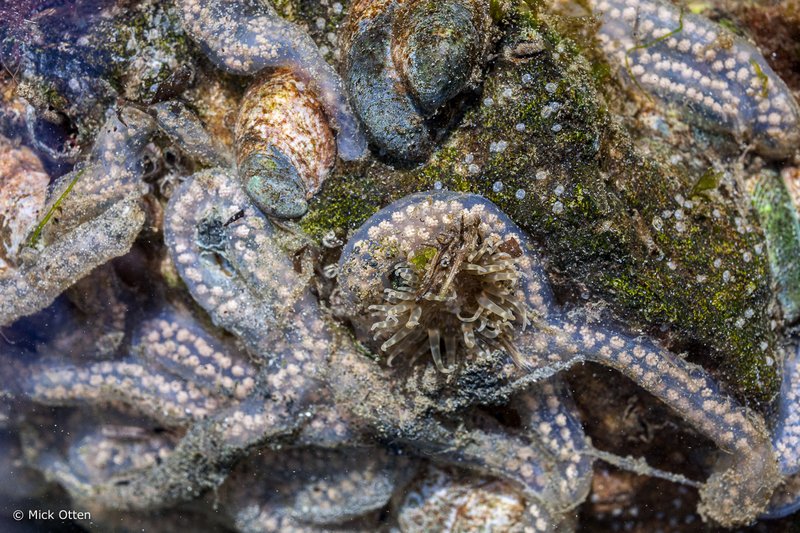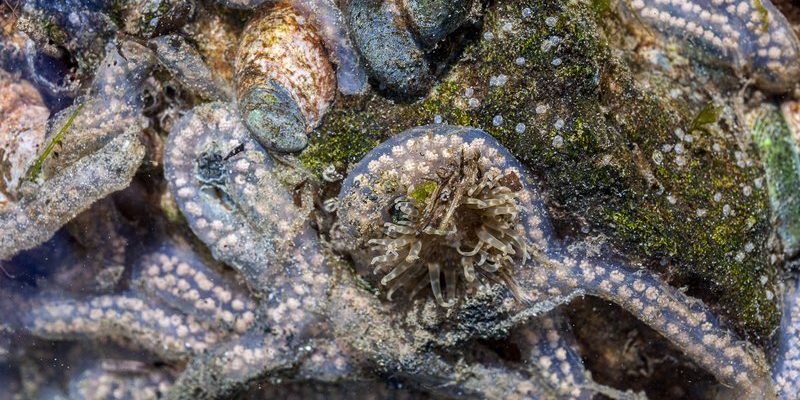
Imagine your garden. Just like every plant and insect has a role to play, the marine ecosystem is a complex web of relationships. Bootlace worms might not be as cute as a garden gnome, but they definitely contribute to the health of underwater habitats. Their relationship with small shellfish, such as clams and mussels, is particularly interesting, and it can reveal a lot about the dynamics of marine ecosystems.
What Are Bootlace Worms?
Bootlace worms, known scientifically as *Lineus longissimus*, are among the longest animals on Earth, potentially reaching lengths of over 30 meters (about 100 feet)! These elongated creatures are usually found in shallow marine environments, hiding among rocks and seaweed. Their unique structure resembles a rope more than a traditional worm, making them quite a sight when spotted.
These worms are part of the Nemertea phylum, which includes several species that display intriguing traits. They possess a unique proboscis, a long, tube-like structure that helps them capture prey. This proboscis is not just for show; it plays a key role in their diet, which primarily consists of small marine animals, including shellfish.
Understanding bootlace worms provides insight into their role as predators. They move gracefully through their marine environments, seeking out food in a seemingly effortless manner, much like a cat stalking its prey in the garden.
How Bootlace Worms Affect Small Shellfish
So, how exactly do bootlace worms impact small shellfish? This relationship is a bit like a tug-of-war. Bootlace worms, being predators, have a direct influence on the populations of shellfish like clams and mussels. When conditions are right, they can significantly reduce the number of these small creatures in specific areas.
This predation can lead to shifts in the local ecosystem. Think about it: if you reduce the number of small shellfish, it affects not only those species but also the animals that depend on them for food. Fish, birds, and even larger marine predators rely on shellfish as a food source. A decline in shellfish could ripple through the food web, altering the balance of the entire ecosystem.
However, it’s not all doom and gloom. Bootlace worms can also promote biodiversity. By preying on the most abundant shellfish, they may actually help prevent any one species from dominating the ecosystem. This dynamic can create opportunities for various marine species to thrive, which is crucial for maintaining a healthy environment.
Bootlace Worms and Shellfish Competition
In the marine world, competition is fierce. Small shellfish are constantly vying for resources like food and space. Bootlace worms enter the scene as players that can influence this competition. When bootlace worms prey on the dominant species—let’s say, a particular type of clam—it can give other species a chance to grow and thrive.
You might be wondering why this matters. Healthy competition among shellfish can enhance the overall resilience of the ecosystem. A diverse range of species can better adapt to changes, such as shifts in climate or habitat loss. Bootlace worms, by keeping shellfish populations in check, indirectly support a more robust and varied marine environment.
However, it’s a delicate balance. If bootlace worms become too numerous, they could push shellfish populations too low. That’s why researchers keep a close eye on these relationships. Understanding how many bootlace worms are in an area can help predict the health of nearby shellfish populations.
The Role of Bootlace Worms in Nutrient Cycling
Every organism contributes to nutrient cycling in its ecosystem, and bootlace worms are no exception. When they consume small shellfish, the process of digestion breaks down organic matter, recycling nutrients back into the environment. This is like composting in your garden, where decayed matter enriches the soil for new growth.
Through their feeding habits, bootlace worms help maintain nutrient levels in the sediment, making it more suitable for other marine life. This nutrient cycling is essential for the overall productivity of marine ecosystems. Healthy nutrients support plant growth, benefiting everything from tiny algae to larger sea grasses, which are vital for many marine species.
And let’s not forget the role of these nutrients in sustaining small shellfish populations themselves. A rich environment encourages more robust growth, which means healthier shellfish. Ultimately, bootlace worms act as both predators and nutrient recyclers, playing a dual role that is crucial for ecosystem health.
Coexisting: Bootlace Worms and Shellfish
The relationship between bootlace worms and small shellfish isn’t purely antagonistic. In fact, there are ways these creatures coexist that promote a balanced ecosystem. For example, not all bootlace worms are highly aggressive predators. Some might feed sporadically, allowing shellfish populations to maintain themselves at sustainable levels.
This coexistence can create a dynamic where bootlace worms and shellfish can both thrive. Picture a dance between two partners, each adjusting their steps to maintain balance. Research shows that areas with moderate bootlace worm populations often have healthier and more diverse shellfish communities.
Moreover, when small shellfish are able to reproduce effectively, this can lead to a stable food source for bootlace worms as well. It’s a cycle; both groups rely on one another to some extent, showcasing the complex interdependence of marine life.
The Future of Bootlace Worms and Shellfish Habitats
With climate change and human impact, marine ecosystems are facing unprecedented challenges. From pollution to overfishing, the delicate balance between species like bootlace worms and small shellfish is at risk. Changes in temperature and water quality can directly affect the populations of both organisms.
Researchers are actively studying these relationships to understand how marine ecosystems can adapt. Understanding how bootlace worms affect shellfish populations is key to developing conservation strategies. It’s like being a detective trying to piece together clues about how to keep the ocean healthy.
Protecting habitats where bootlace worms and small shellfish thrive is essential for maintaining biodiversity. This includes conserving coastal areas, reducing pollution, and managing fishing practices to ensure that both groups can exist in harmony.
In the grand tapestry of marine life, bootlace worms play a significant role, especially concerning small shellfish. They serve as predators, influencing shellfish populations and promoting biodiversity in the process. While they can pose challenges, they also help maintain the delicate balance necessary for a healthy marine ecosystem.
As we learn more about these relationships, it becomes clear that protecting the ocean’s inhabitants is crucial for future generations. By understanding the ecological impact of bootlace worms, we can take steps toward preserving our marine environments. Every worm, shellfish, and creature contributes to the richness of ocean life, reminding us just how interconnected we all are. So, next time you’re by the sea, remember this hidden world beneath the waves—it’s more vibrant than you might think!

